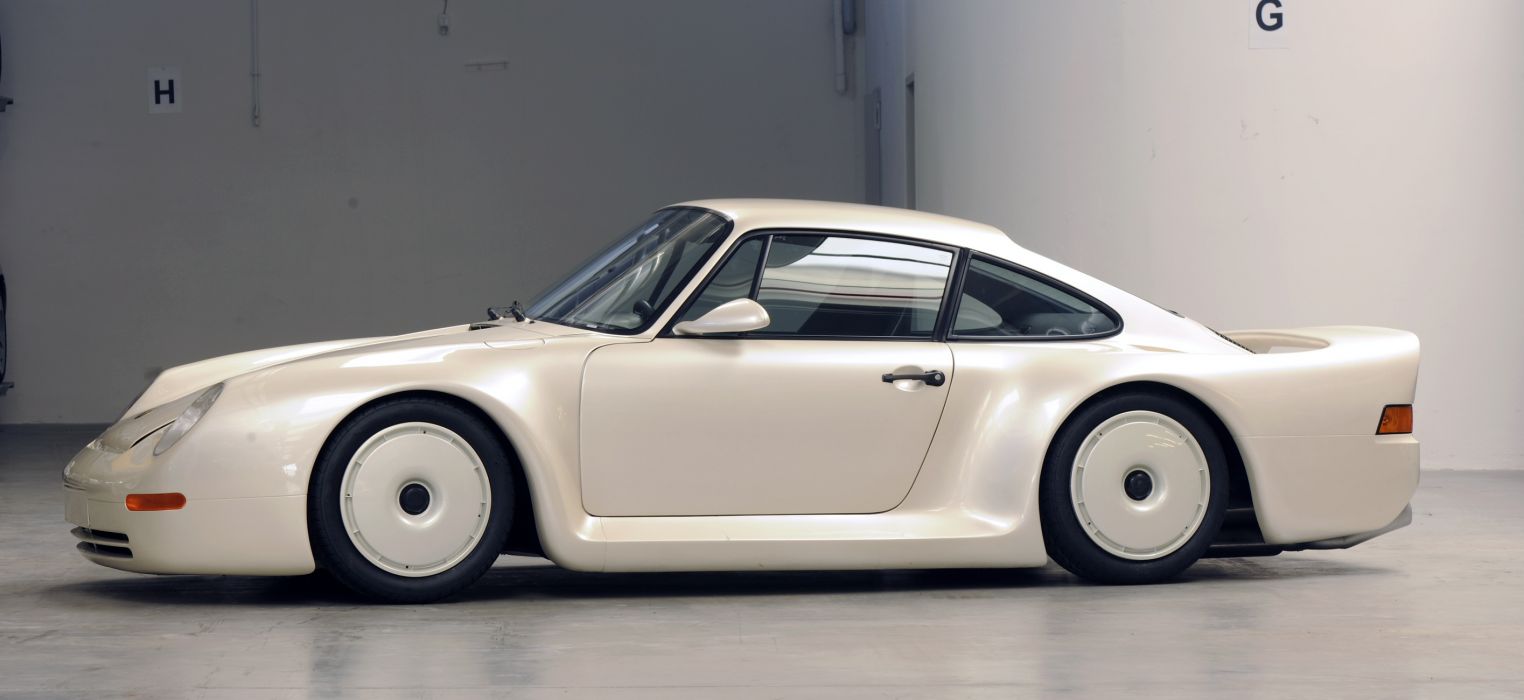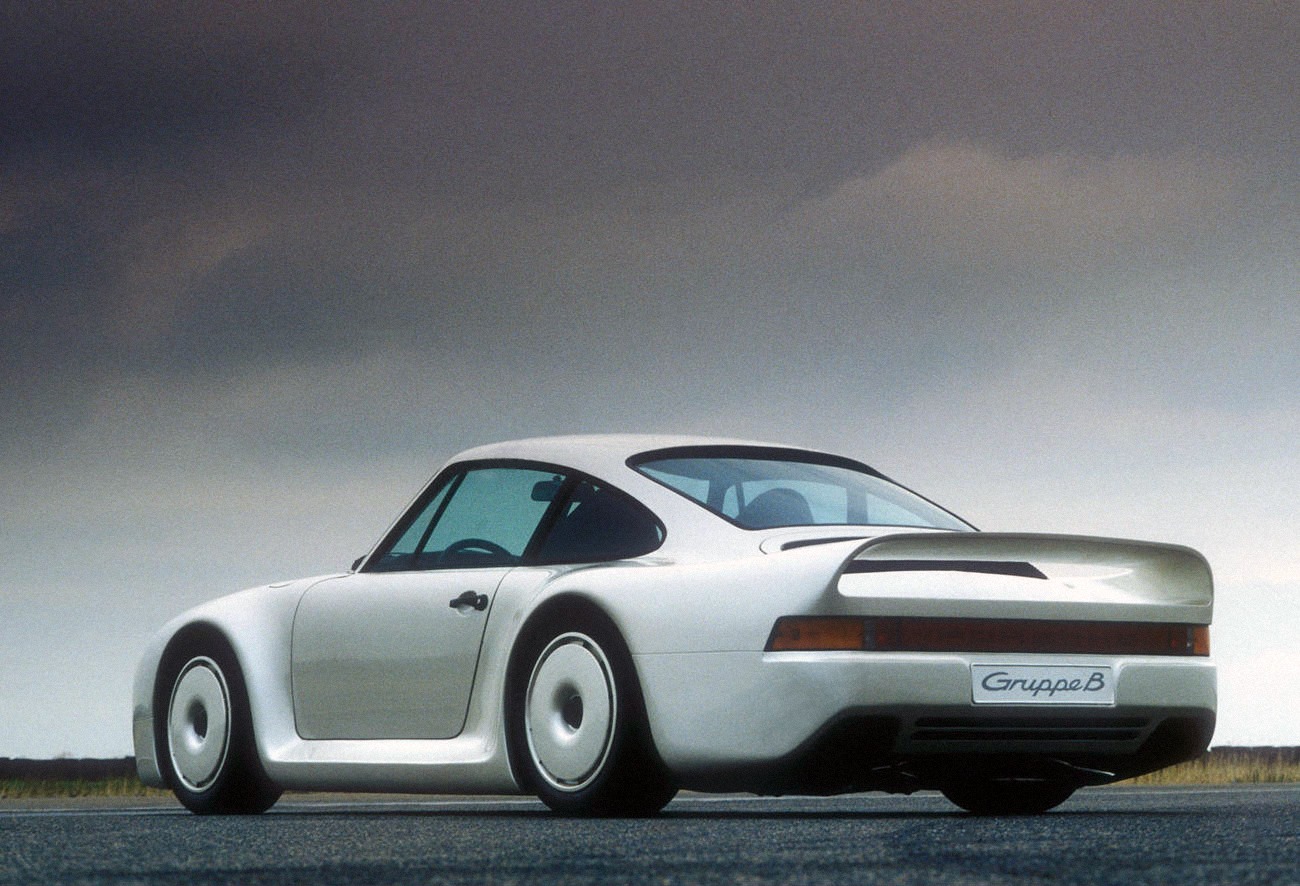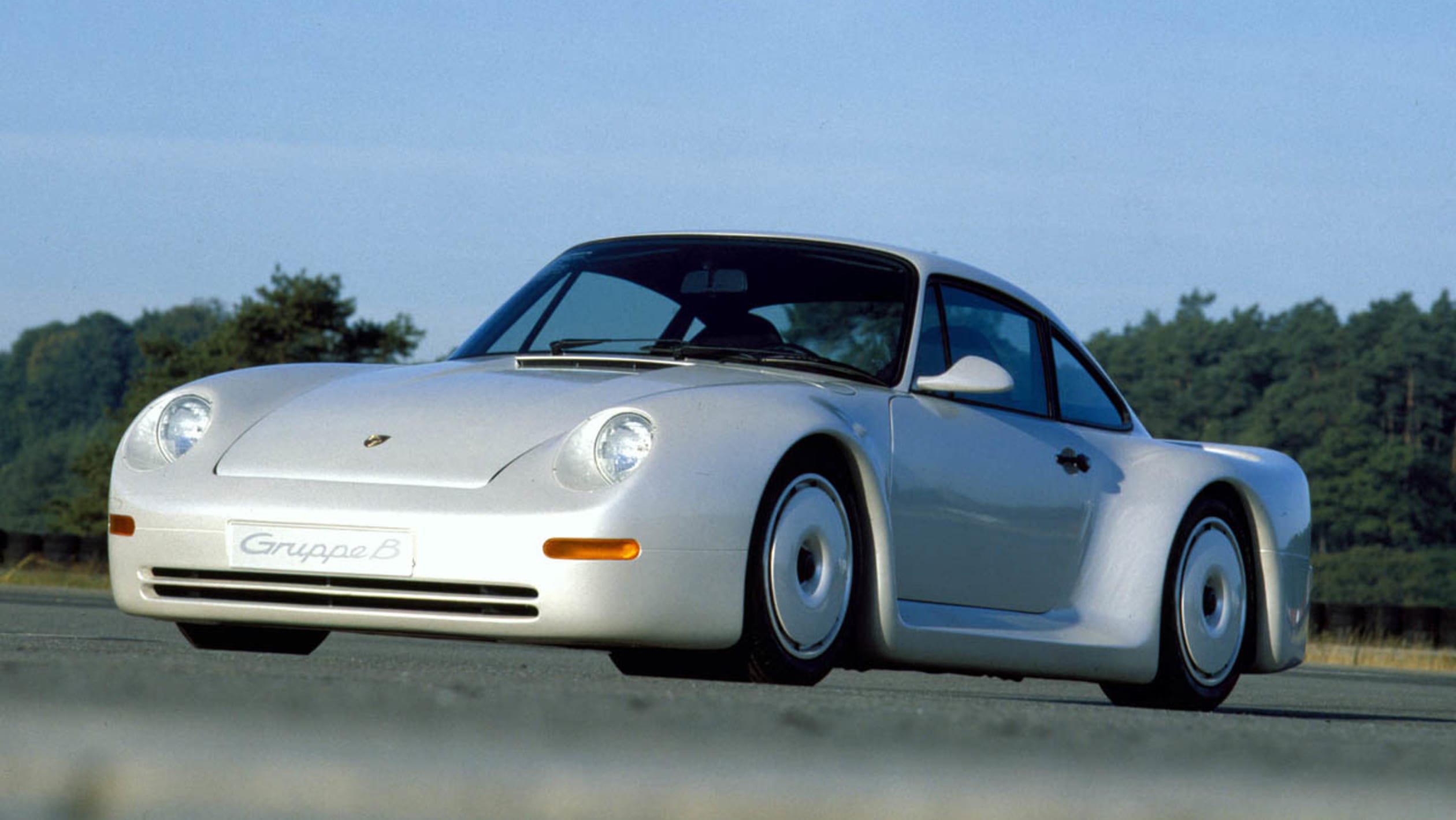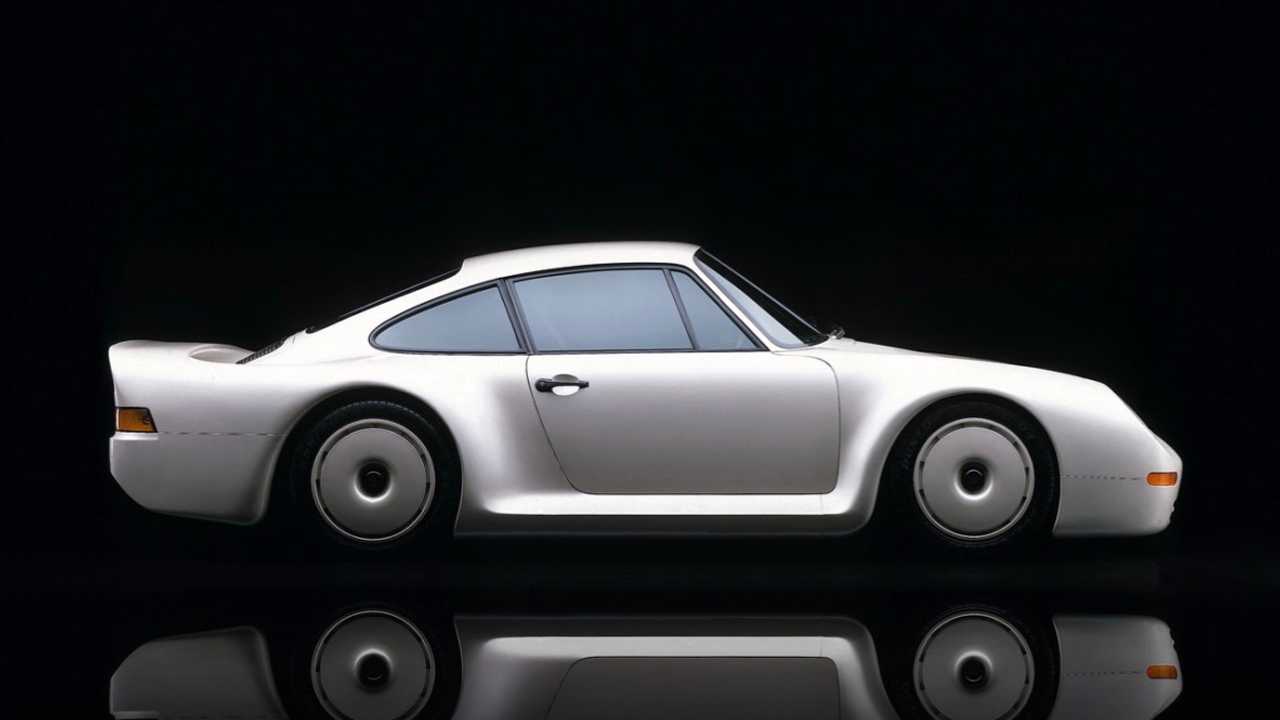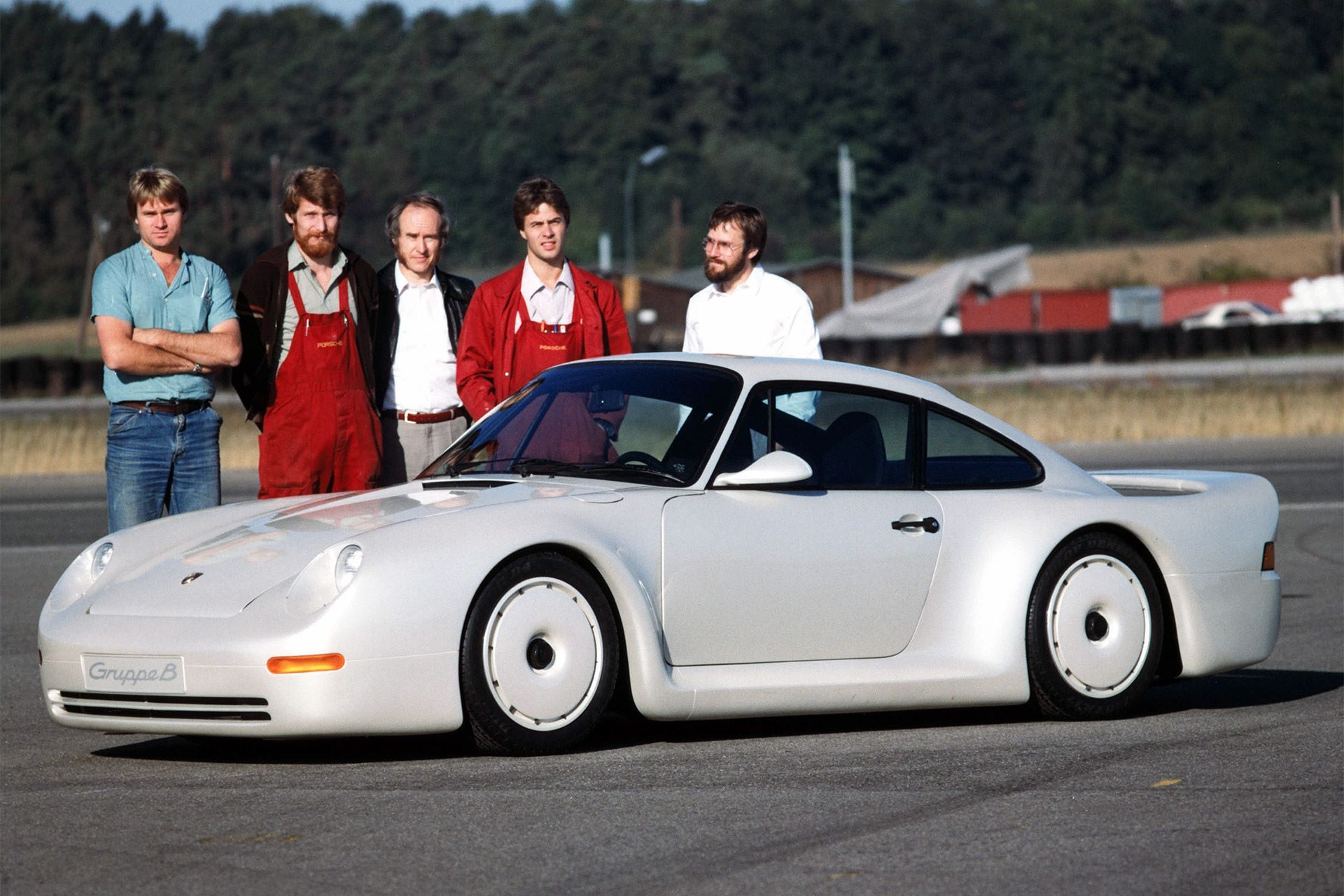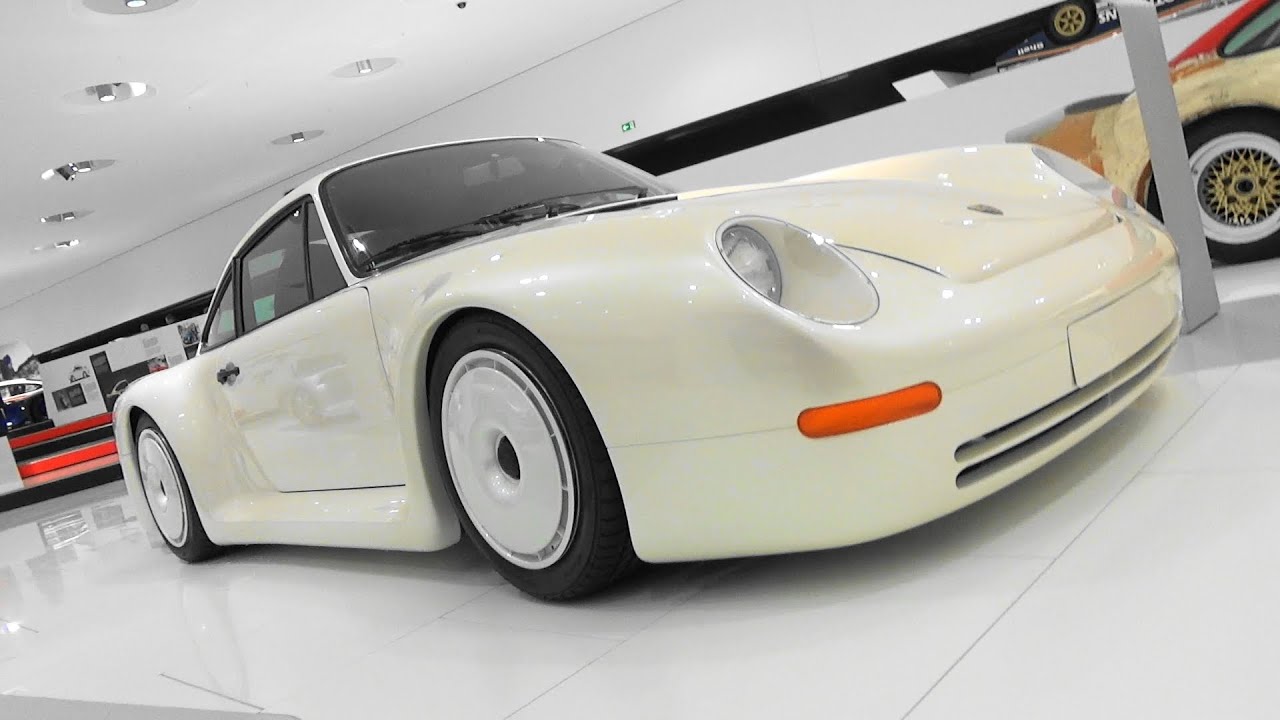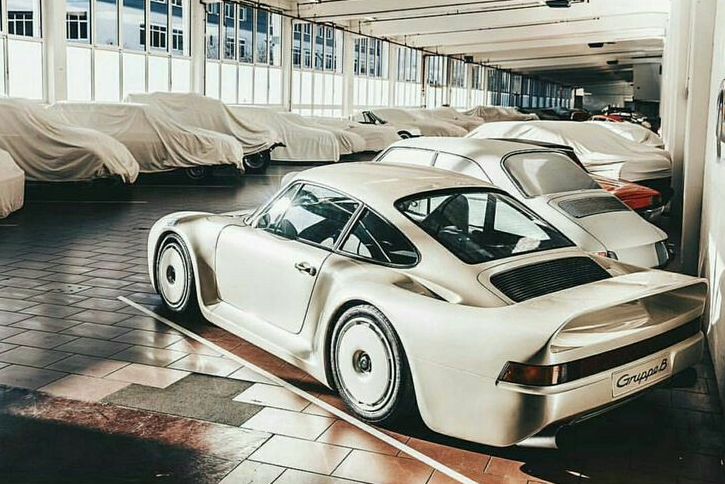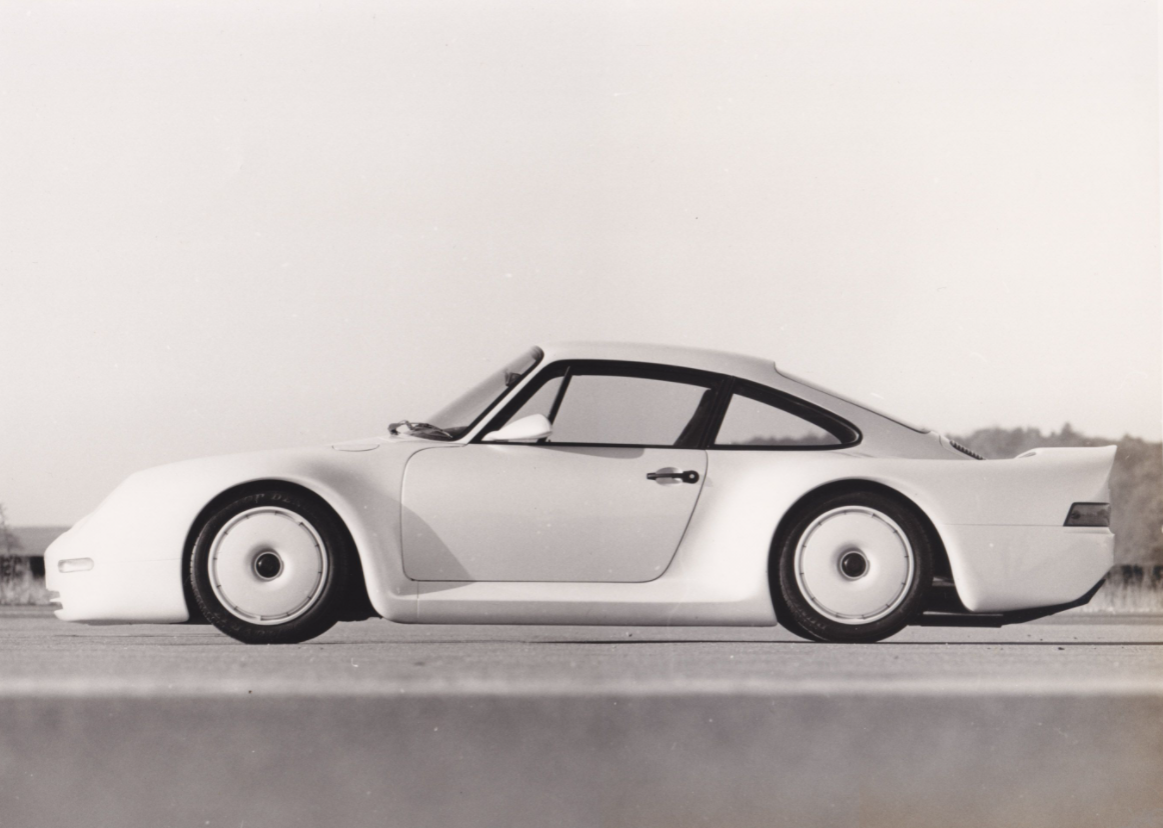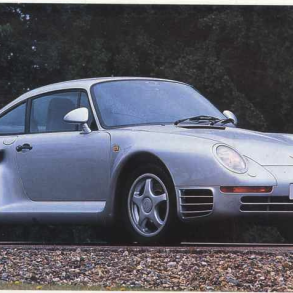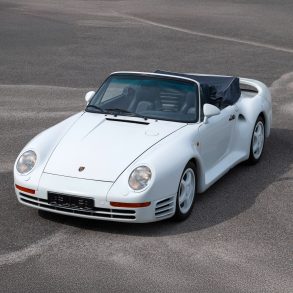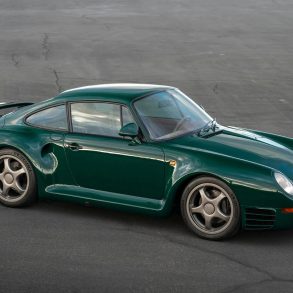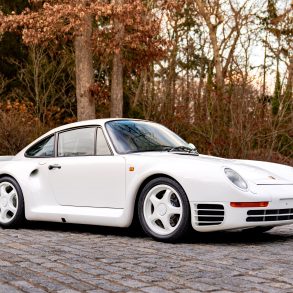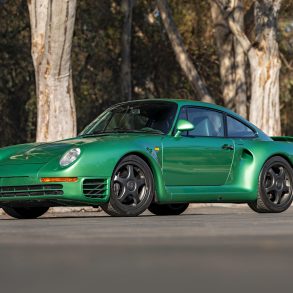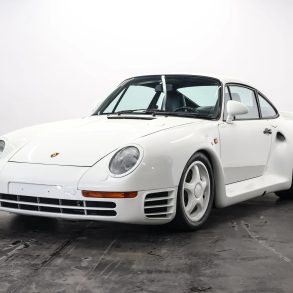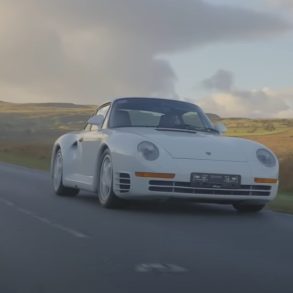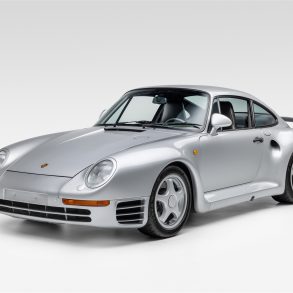Porsche 959 Gruppe B (1983)
It all started in 1981 when Porsche’s chief engineer Helmuth Bott had an idea for a new 911 that would be all-wheel drive. To get people onboard he pitched the new car as a race car for Group B. He got approval, but costs were to be kept low by using an existing Group C engine.
The idea gained steam as early as 1983 when the Guppe B prototype was displayed at Frankfurt Motor Show. While there were glimpses of the contemporary 911 in the Gruppe B – the wheelbase, the roofline, the windows and doors, much of the interior – in truth the new model had little in common with Porsche’s perennial sports car.
The prototype Gruppe B’s bodywork went through unique developments – air vents in both the front and rear wheel housings as well as the air intakes in front of the rear wheels were added – and it was in this form that it made its debut as a production car at the 1985 Frankfurt show. Much of the hardware was as per the prototype.
With the development of the project, Porsche saw the 959 basically as their car for Group B racing. To that effect, they planned on producing 200 to homologate the car. Therefore, the prototype became known as the Gruppe B Studie car. The production of the 959 only started in 1985, but it never raced in any Group B race. However, it was the most exceptional street legal car of the 1980’s.
So the 959 being the THE Car, the car that Mercury drives to go to the gym, I also had to have the prototype version in the Garage. Spark did a fantabulous job on the Gruppe B, and the pearl white paint job is just stunning. For the refined collector (that translates to 959 fan) I think the Komfort model is the one. Specially if from Spark. But this one looks so good that I think it comes in a very close second.
The boxer-6 Typ 935/76 engine was expanded to 2849 cm³ but kept the titanium connecting rods and the four gear driven camshafts. The engine block was air-cooled while the four valves cylinder head were water-cooled, like the race engine. It also had two turbos ingeniously set up in a sequential way to reduce lag, producing 450 hp. Though not openly admitted by Porsche, the chassis was basically a regular 911 (930) chassis, but with an aluminum and Kevlar composite body with a Nomex floor.
The 959 also received an unique 6-speed manual gearbox with five forward speeds plus a “gelände” (terrain) off-road gear, as well as reverse. But one of the really exceptional traits of the the 959 was the PSK system. The Porsche-Steuer Kupplung was at the time the most advanced all-wheel-drive system in a production car, capable of dynamically changing the torque distribution between all four wheels, giving the car a fantastic adaptability both as a race car and as a street car. And to make things even more refined, the car had Wabco anti-lock brakes, rims were “Demloc” rims (a flat tire won’t leave the rim and can be driven for around 100 km), wheels had pressure monitors and ride height was adjustable by the driver.
Specs & Performance
| type | Concept / Prototype Car |
| released at | 1983 Frankfurt Motor Show |
| built at | Stuttgart, Germany |
| production | 1 |
| engine | V6 |
| position | Rear |
| aspiration | Turbocharger |
| block material | Cast iron |
| valvetrain | 4 valves per cylinder |
| fuel feed | Injection |
| displacement | 2850 cc / 173.92 in³ |
| power | 335.6 kw / 450 bhp @ 6500 rpm |
| specific output | 157.89 bhp per litre |
| body / frame | Aluminium/Plastic Composites |
| driven wheels | 4WD |
| front brakes | Discs |
| rear brakes | Discs |
| transmission | 6-Speed Manual |
| top speed | ~316.97 kph / 197 mph |
| 0 – 60 mph | ~3.6 seconds |
| 0 – 100 mph | ~8.5 seconds |
Pictures
